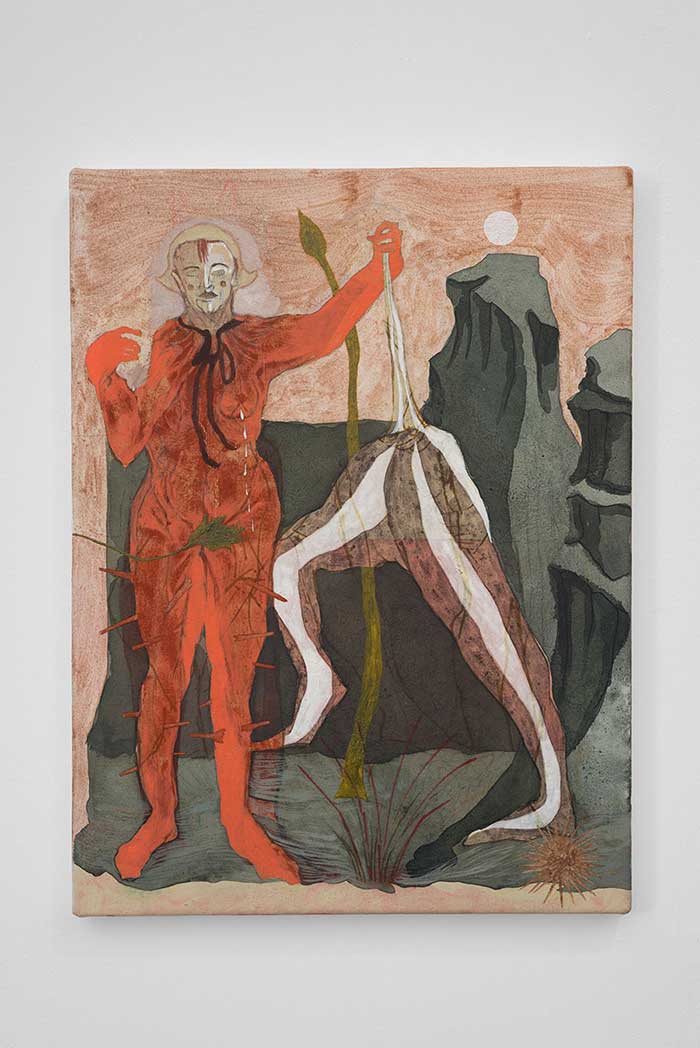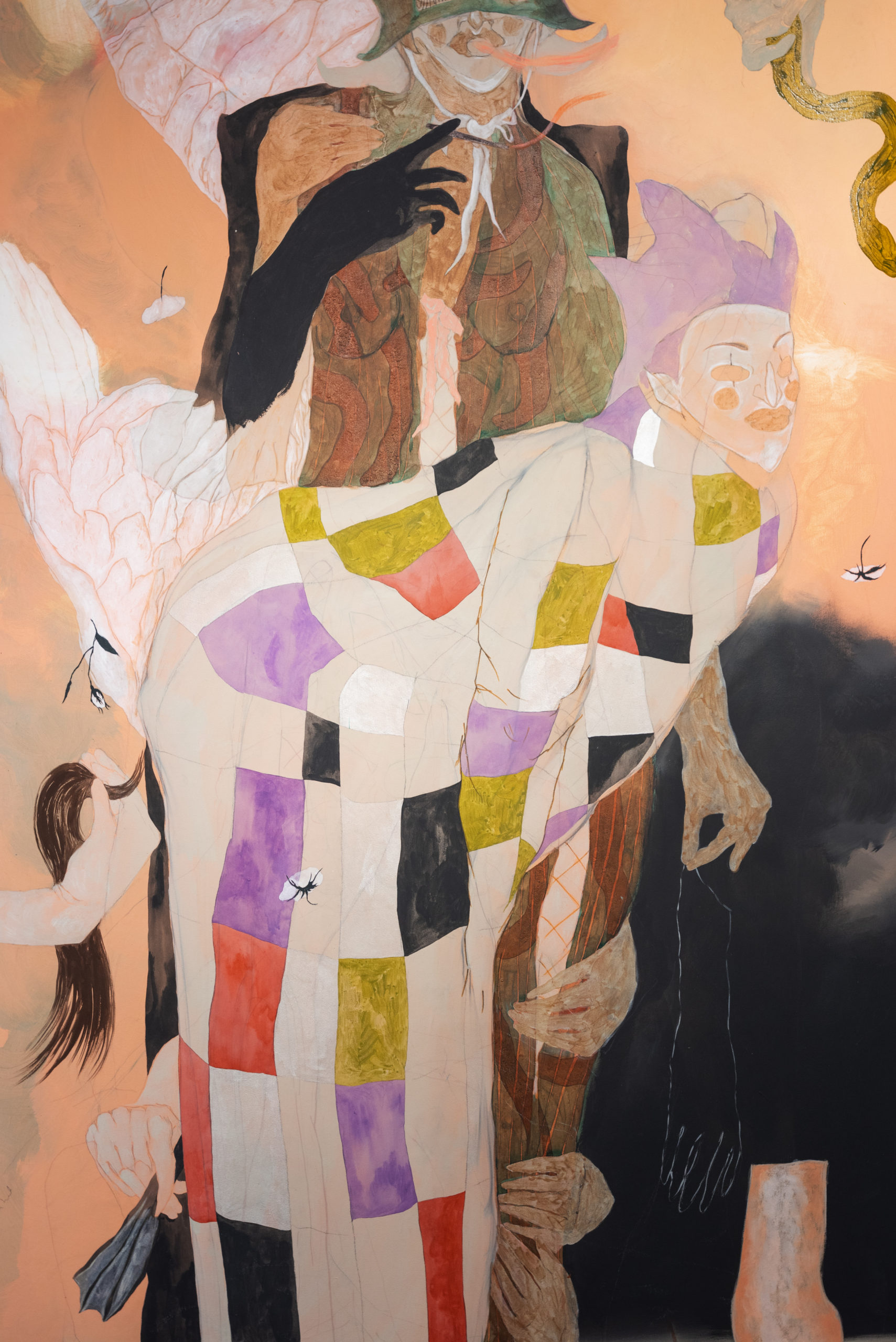Ella Walker’s exhibition, Cosmati Floor and Wax Fruit, takes a panoramic look at both medieval and modern imagery. Magpie-esque, Walker has said she enjoys ‘engaging with narratives and stories which are not entirely [her] own’, ranging from Chaucer’s Canterbury Tales to Piero della Francesca’s religious iconography. Walker’s paintings recontextualise well known art historical figures; in Saint Sebastian, 2019, the early Christian Saint and Martyr is juxtaposed with Marine Serre printed tights floating atop a staircase in the style of Giorgio de Chirico; in Cosmati Floor and Wax Fruit, 2019, lewd medieval figures wear Sarah Lucas-esque fried eggs for underwear, and don Mason Margiela Tabi Boots as shoes.
Using the common Medieval event of the Carnival as a starting point, Mikhail Bakhtin, writer and cultural theorist, argues that the Middle Ages are a particularly special period in art history because of its radical approach of understanding both Self and Other in art. Where Classical and Modern conceptions of the Self view the body as closed – individual, finished, clearly delineated and self-sufficient – think Michelangelo’s heroic sculpture, or Botticelli’s sublime nude – the Medieval Body is liminal and grotesque: ‘The grotesque body is not a closed complete unit; it is unfinished, outgrows itself, transgresses its own limits … this is the ever unfinished, ever creating body’.

Two Figures and a Triumphs Head, 2020
Here, the medieval body celebrates life and regeneration through its profane liminality. Walker capitalises on these complexities in her work. Her figures outgrow themselves through wispy tendrils of hair, exuberant costume, erotic posture. Body parts are refracted throughout the paintings as masks, disembodied limbs, and carnivalesque costume. The figures in her work are refracted, vacant, and disembodied. Where the viewer’s gaze would normally be drawn – the eyes of the subjects depicted – the faces recede, ghostly and elusive.
In Pierrot, 2019, for example, there are two discernible figures, layered atop one another. One, a jester, wearing a patchwork gown, bends. The other, a darker character, stands, smoking. Disembodied hands protrude from the background, their purpose vague and unknown. On the floor, a set of dentures; from the sky, a snake, proffered purposelessly. These items are props in unknown tales with mysterious agencies, inviting the viewer to make their own syntactic connections. Both allusive and elusive, her images refuse to lend the viewer an easy understanding.
In installation, Walker’s paintings are hung like tapestries from a single point of contact with the wall. Like tapestries, they weave together different strands of history, fable, and aesthetic. The resulting juxtapositions encourage the viewer to rethink binaries of old and new, high and low culture, and reorganise our understanding of the sacred and the profane
(By Lydia Earthy)
